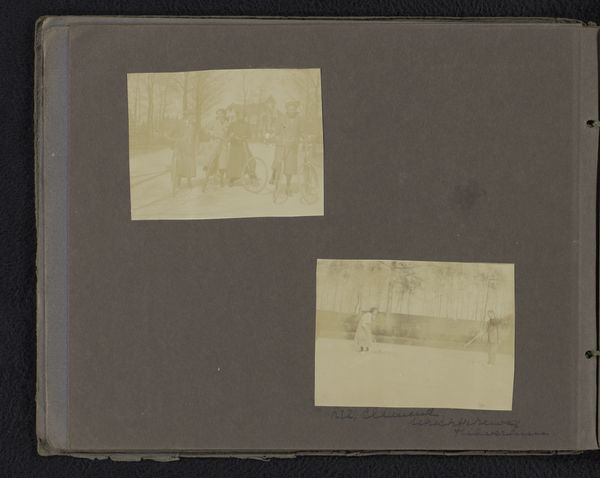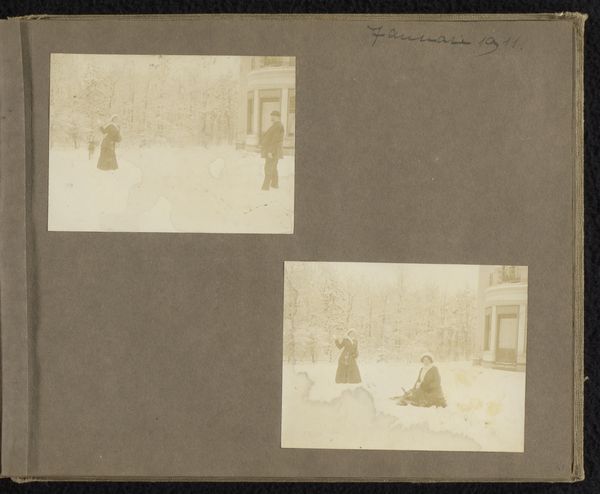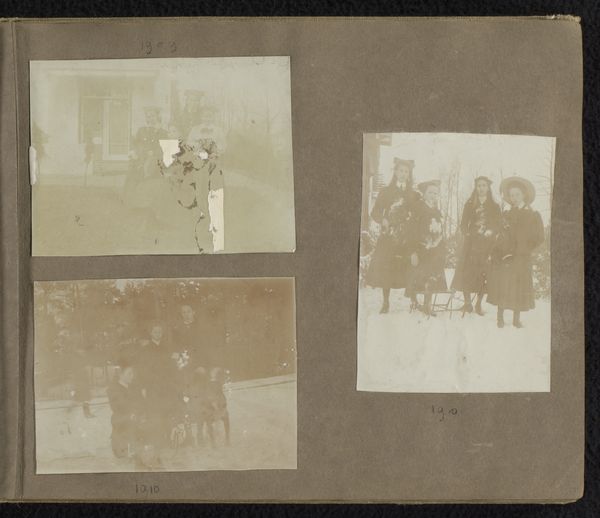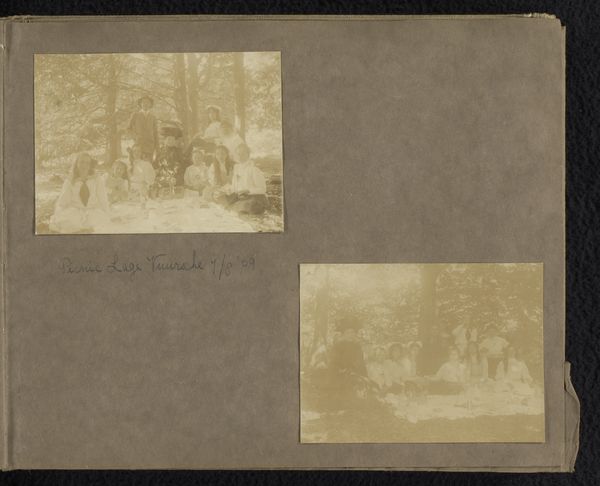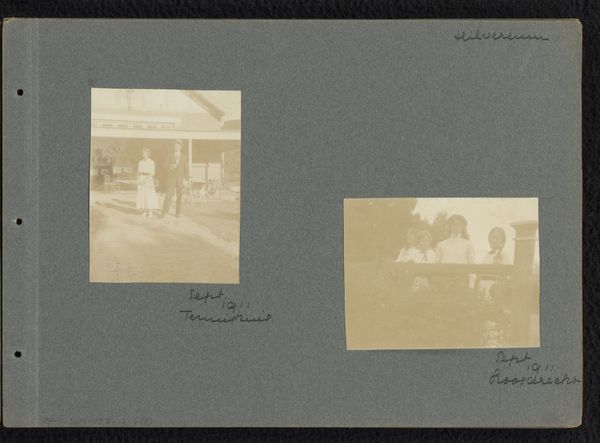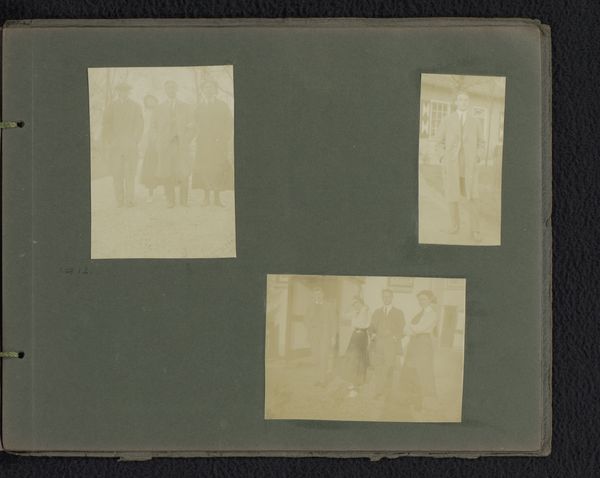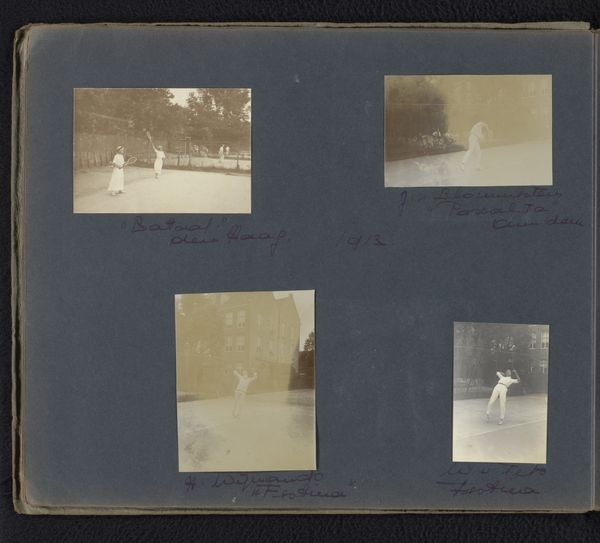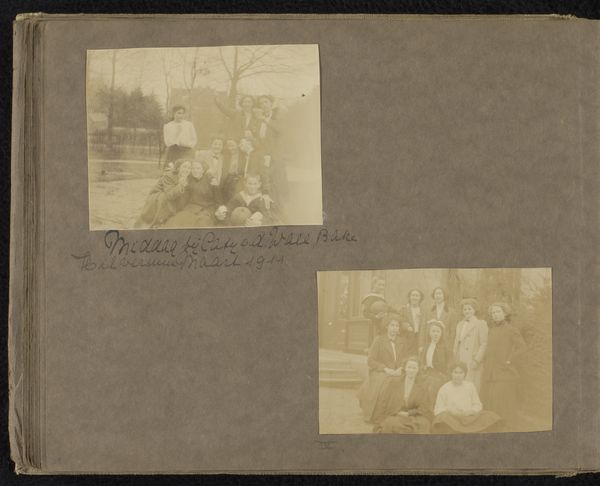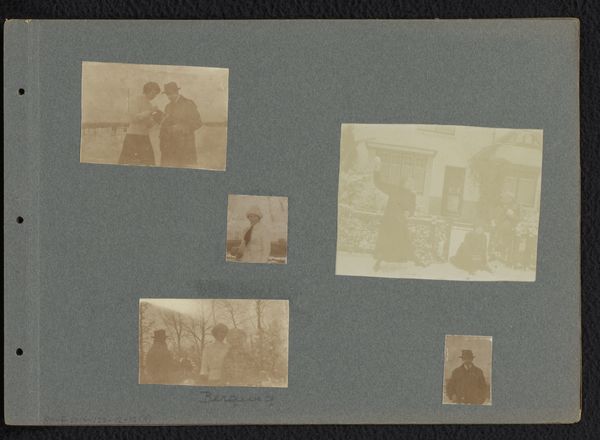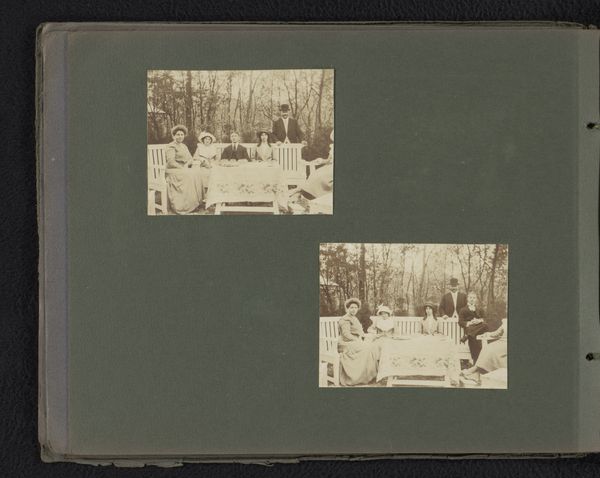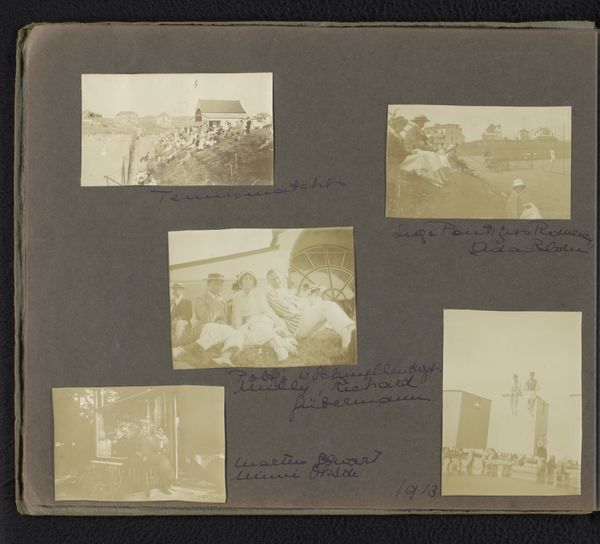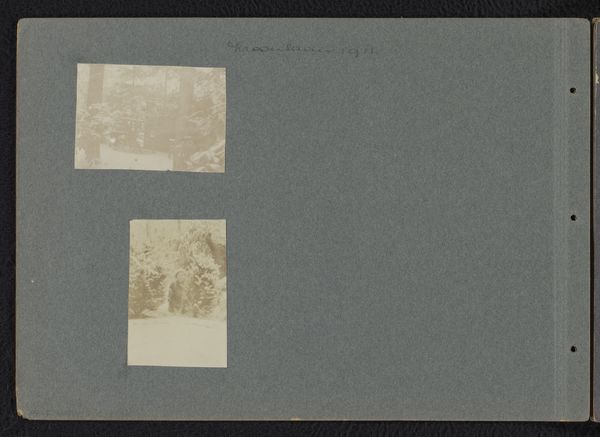
Twee foto's van Loentje Onnen met vriendinnen in de sneeuw, Hilversum 1911
0:00
0:00
photography
#
portrait
#
snow
#
pictorialism
#
landscape
#
photography
#
group-portraits
Dimensions: height 203 mm, width 253 mm
Copyright: Rijks Museum: Open Domain
Editor: So, this artwork presents two photographic images titled "Twee foto's van Loentje Onnen met vriendinnen in de sneeuw, Hilversum," taken in 1911 by Carolina (Loentje) Frederika Onnen. Both are black and white and depict groups of women standing in a snowy landscape. What strikes me most is the sense of shared experience they seem to convey, the casual gathering of women, perhaps hinting at solidarity amidst the restrictions of their time. How do you interpret these photos, thinking about them in the context of their era? Curator: I find it compelling to consider these images as acts of self-representation and agency. In a period where women's roles were severely constrained, these group portraits in a public space challenge the social norms. They suggest female camaraderie and a shared claiming of the landscape, resisting the limitations imposed upon them. It also makes me think about Pictorialism in photography at this time. Editor: Interesting. Do you think the artistic style contributes to that reading? Curator: Absolutely. Pictorialism, with its soft focus and emphasis on artistic composition, was often used to elevate photography to the level of fine art. But here, I see it also serving as a way to frame these women not just as subjects but as active participants in shaping their own image. Are they simply friends posing for a picture or are they intentionally performing a form of social resistance through this very act of photographic representation? What’s your sense? Editor: I hadn't thought about it as a performance, but that adds a layer of intentionality to the photos. Maybe their enjoyment, being present in a space coded masculine, is powerful within its own right. Curator: Precisely. These photographs, read through a feminist lens, offer a nuanced perspective on early 20th-century female identity. It highlights a desire of expression in a world that expects women to remain firmly within a sphere dictated by the male gaze. Editor: This discussion has given me a new appreciation for these images. What seemed like simple portraits now resonate with themes of female solidarity and silent activism. Curator: Indeed. And hopefully encourages more dialogue about representation and the reclaiming of narrative within art history.
Comments
No comments
Be the first to comment and join the conversation on the ultimate creative platform.
